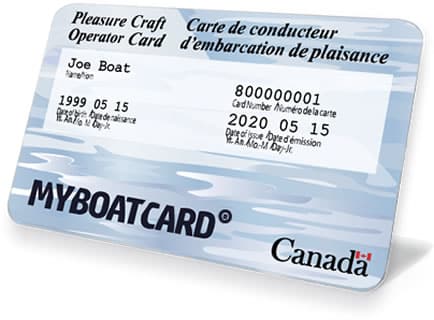Proof of Competency
In Canada, all operators of recreational powered watercraftPOWER DRIVEN VESSEL – is a watercraft that is propelled by any type of engine or machinery. A sailboat that is being propelled by its engine, even if it has its sails up, is deemed a power-driven vessel. must carry proof of competency on board at all times (excluding the Northwest Territories and Nunavut). This includes all types of motorized boats, no matter their size or the horsepower of the engine (this includes small boats with electric motors.) Failing to produce proof of competency to an enforcement officer may result in a fine.
The Competency of Operators of Pleasure Craft Regulation (COPCRs) is in place to ensure that boat operators have a minimum level of basic boating safety knowledge in an effort to decrease the number of accidents and fatalities.
Note: Proof of competency is not required for pleasure craftsPLEASURE CRAFT – is any type of watercraft that is used exclusively for pleasure and does not carry passengers or goods for hire, reward, remuneration, or any object of profit. If remuneration is earned for a service provided by a vessel, then that vessel is deemed to be a commercial vessel. without a motor.
What are the Accepted Forms of Proof of Competency?
Proof of competency can be any of the following:
- A Pleasure Craft Operator Card (PCOC);
- A certificate that states you have successfully completed a boating safety course in Canada prior to April 1, 1999;
- A completed and signed boat rental safety checklist (applicable only for rental period); or
- A specified marine certificate or equivalency recognized by Transport Canada.
 If carrying a Pleasure Craft Operator Card as proof of competency, the original card must be carried on board. Photocopies or electronic copies of the card will not be accepted as proof of competency.
If carrying a Pleasure Craft Operator Card as proof of competency, the original card must be carried on board. Photocopies or electronic copies of the card will not be accepted as proof of competency.
For more information on the proofs of competency that are recognized by Transport Canada, please visit the Office of Boating Safety website.

